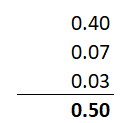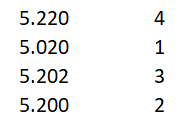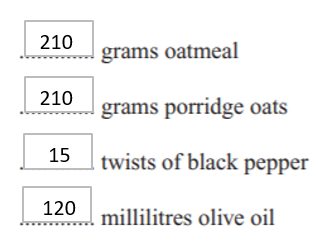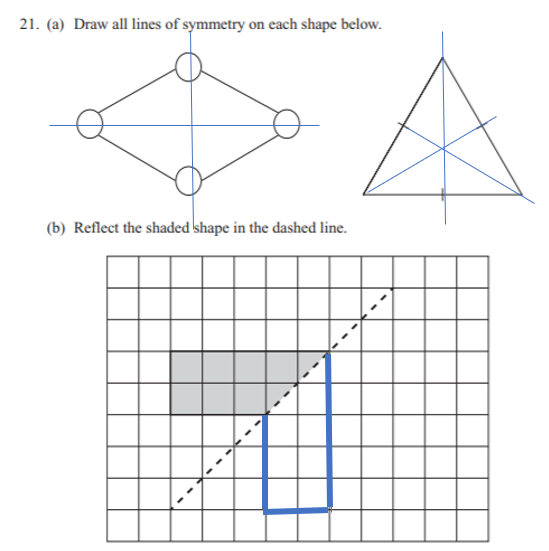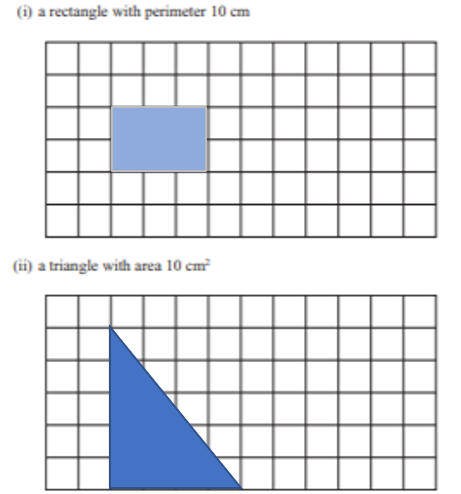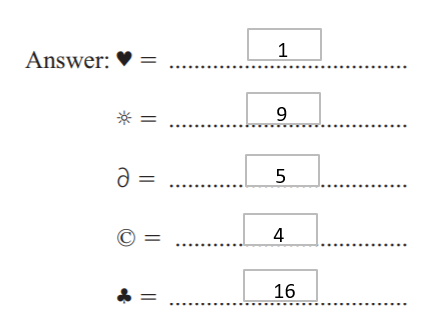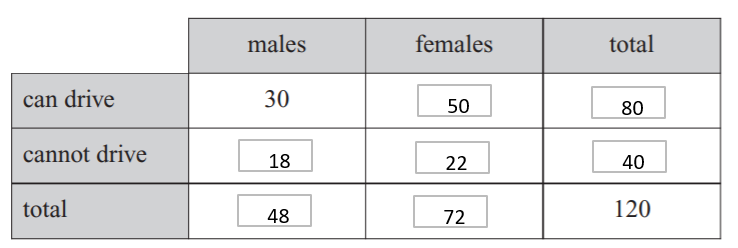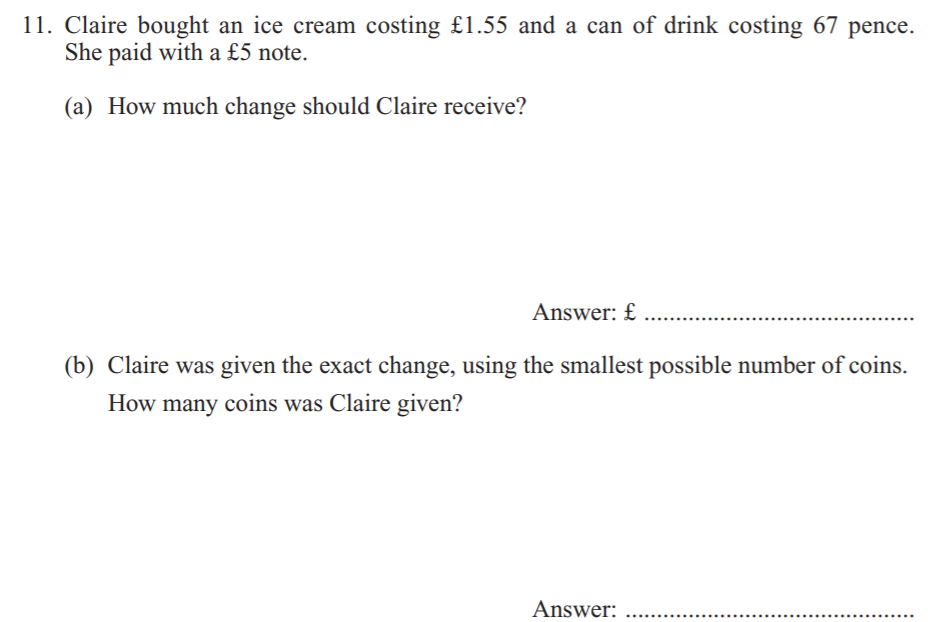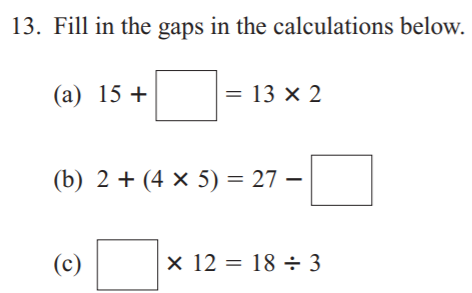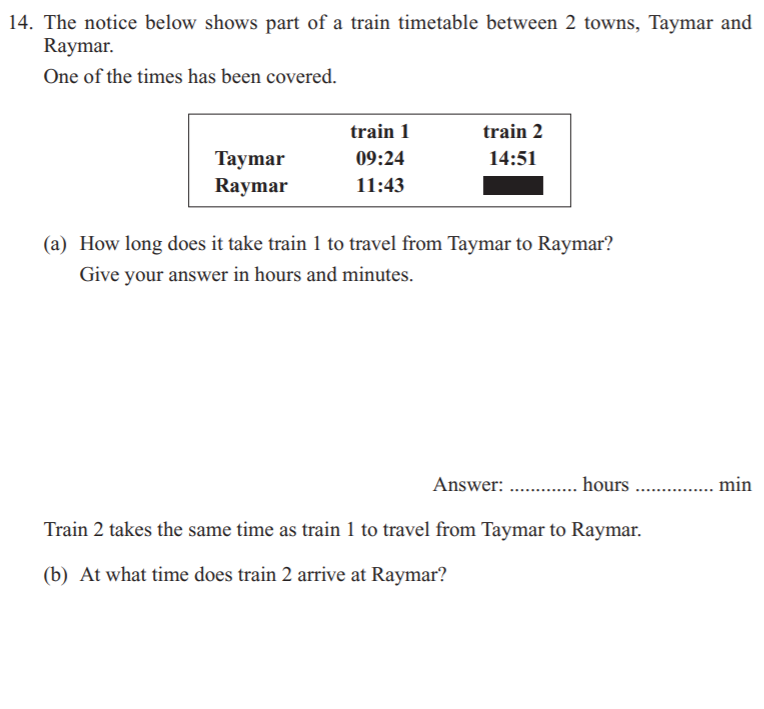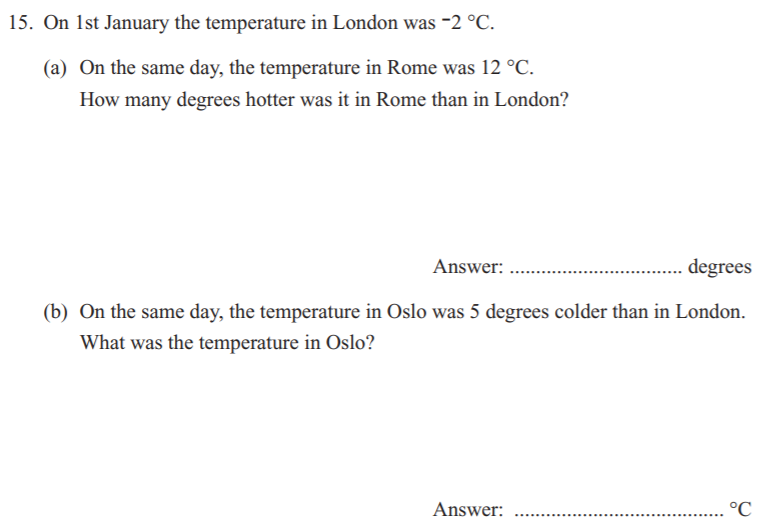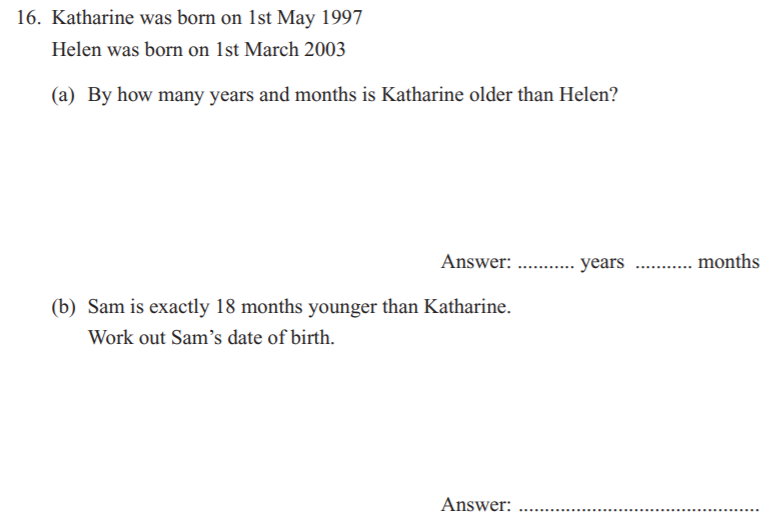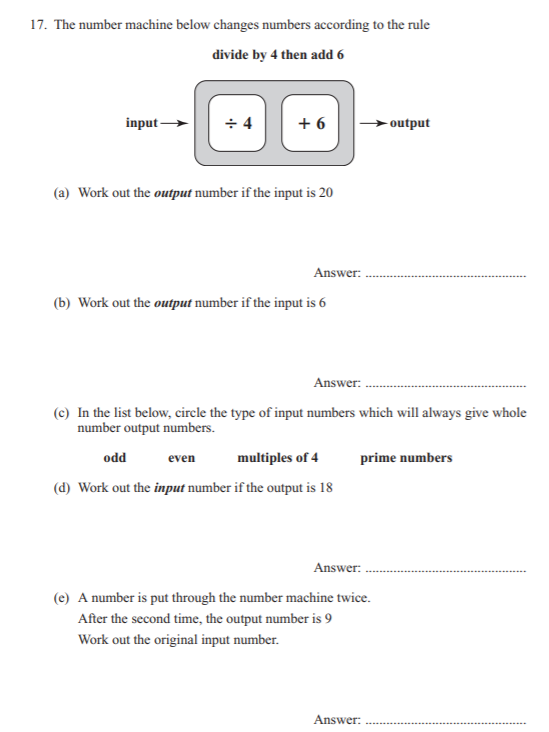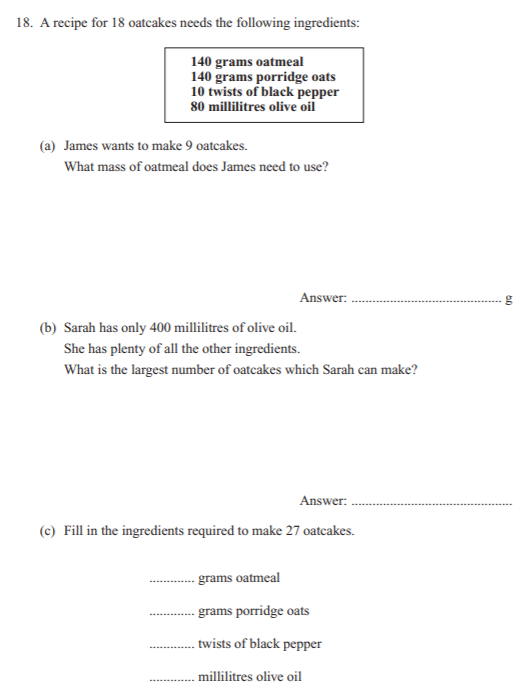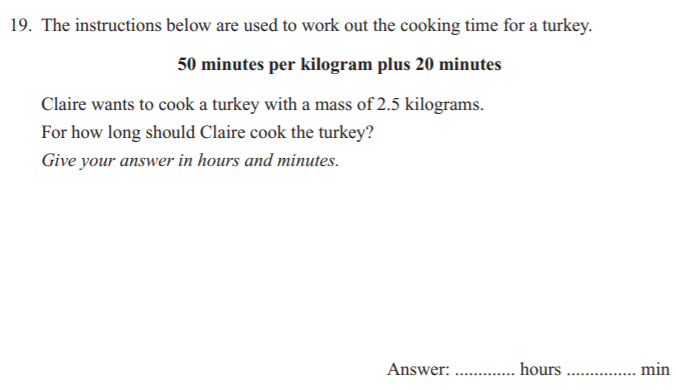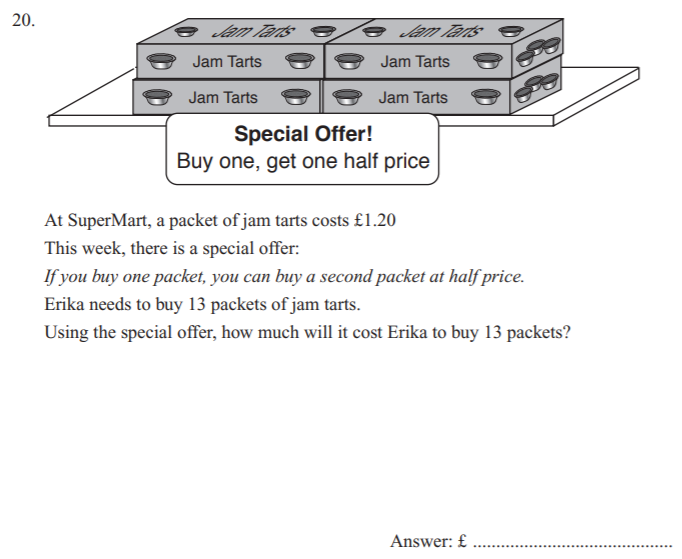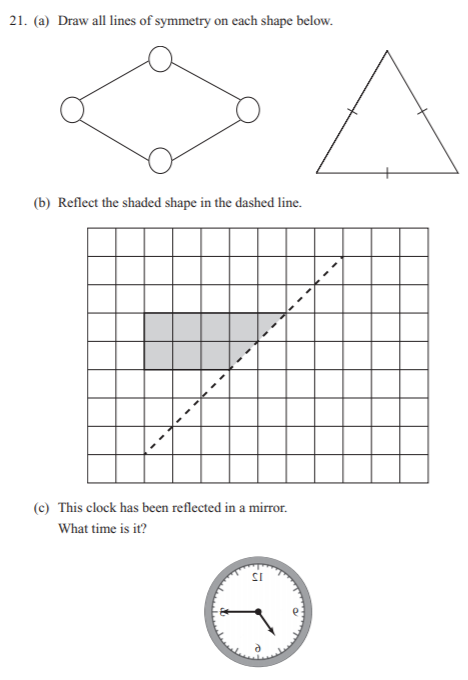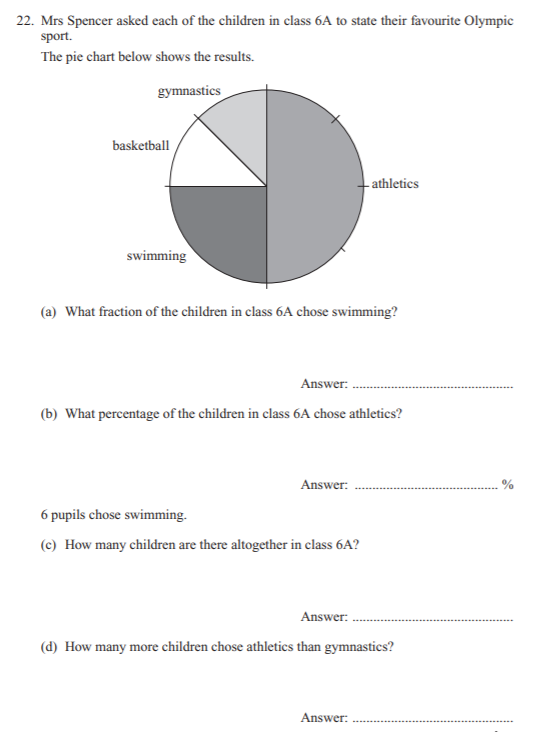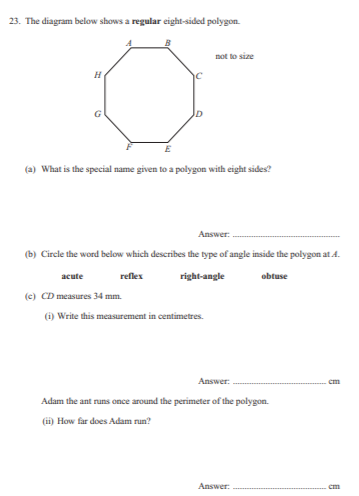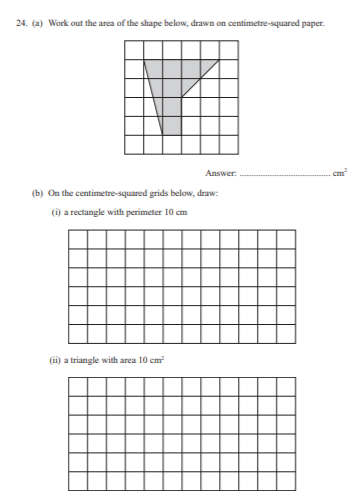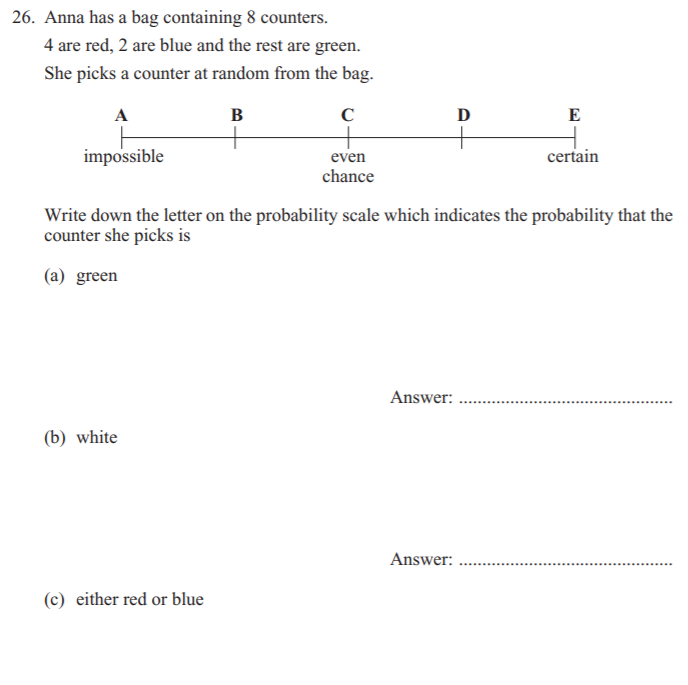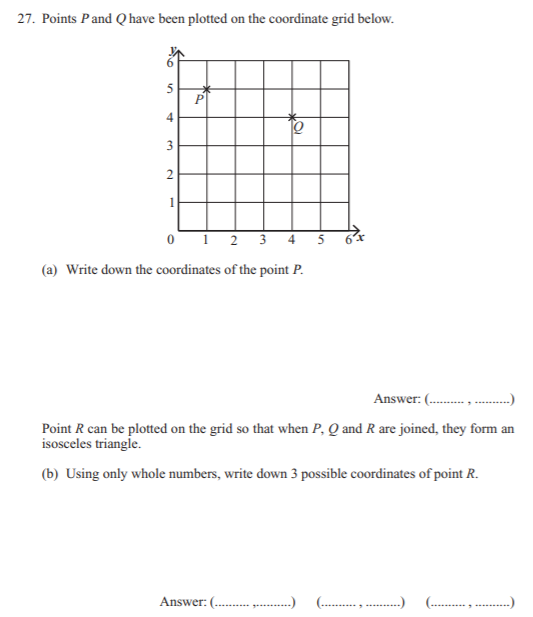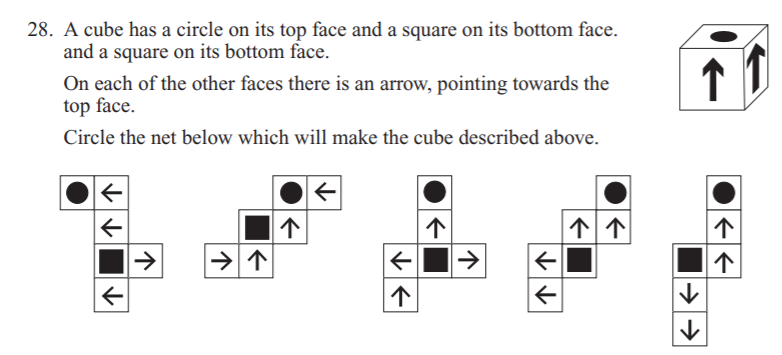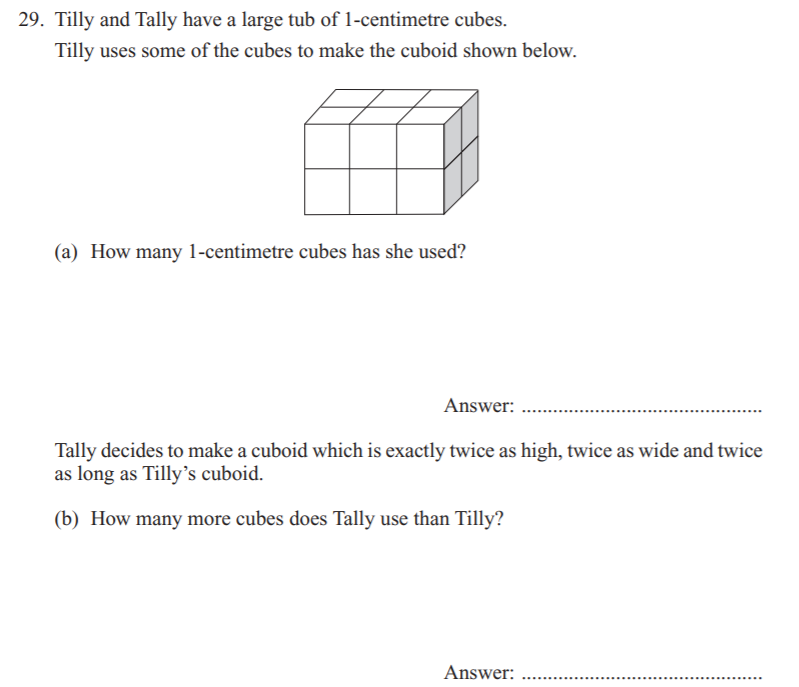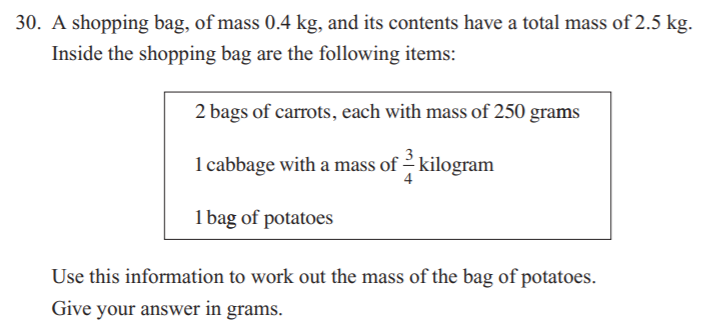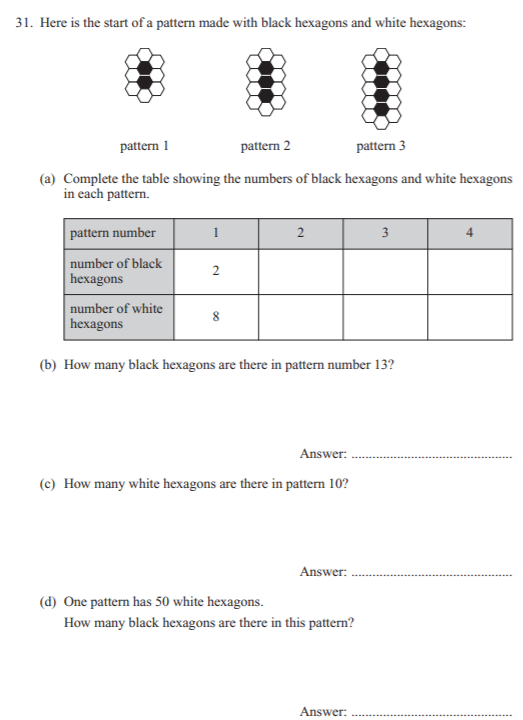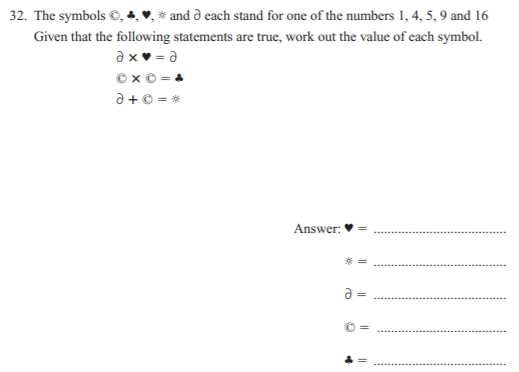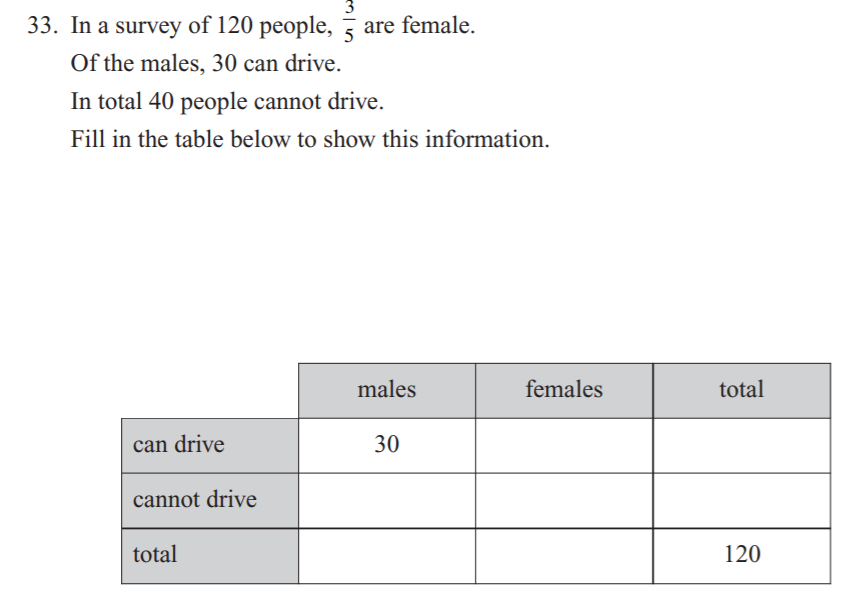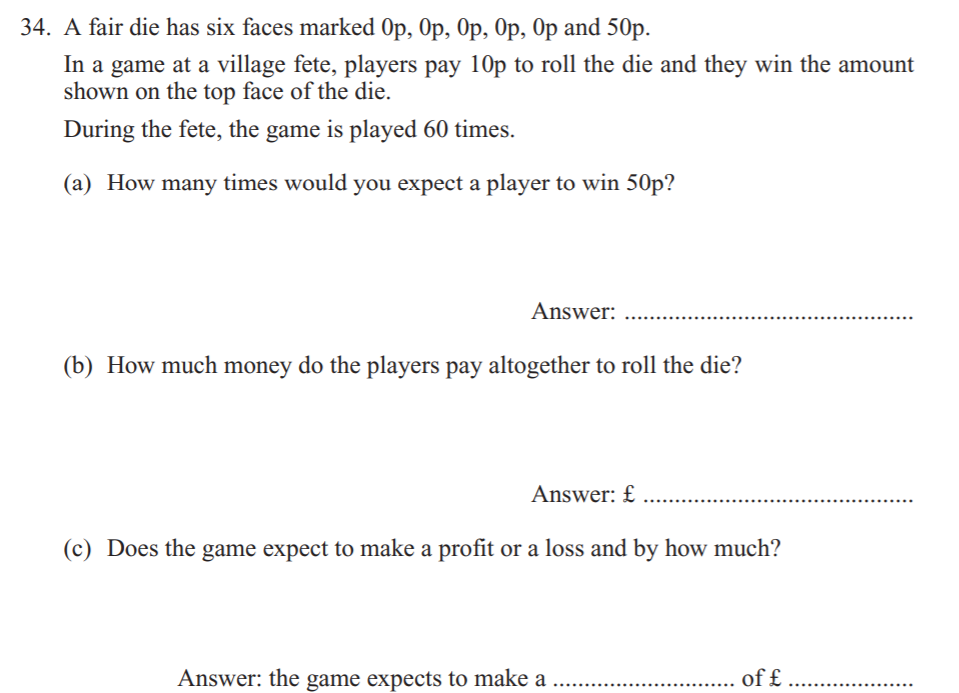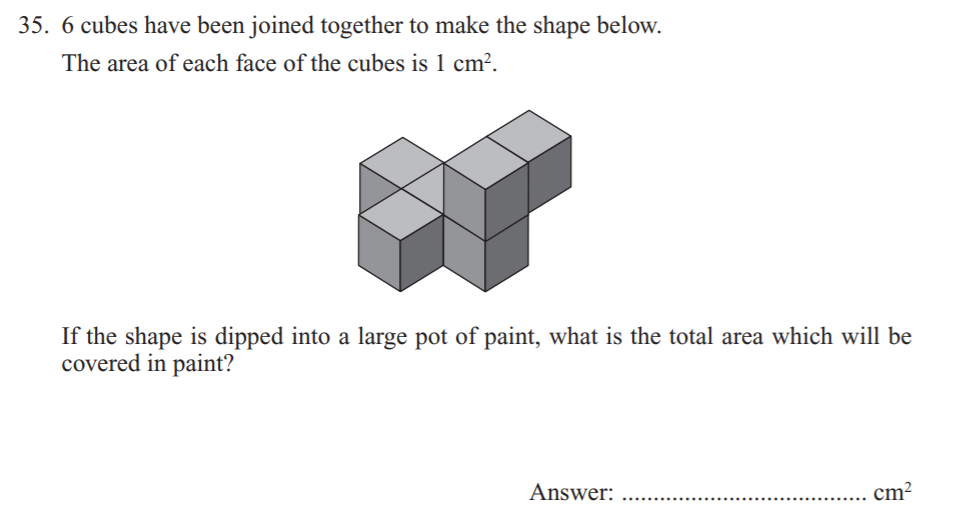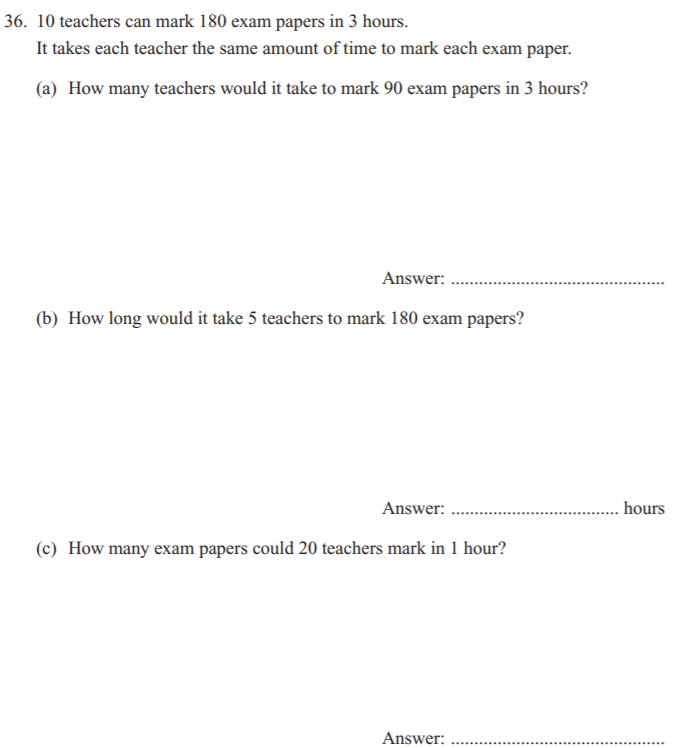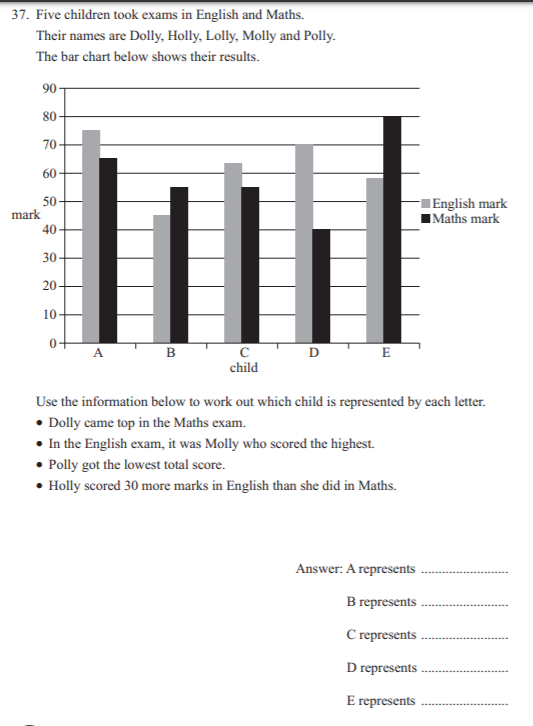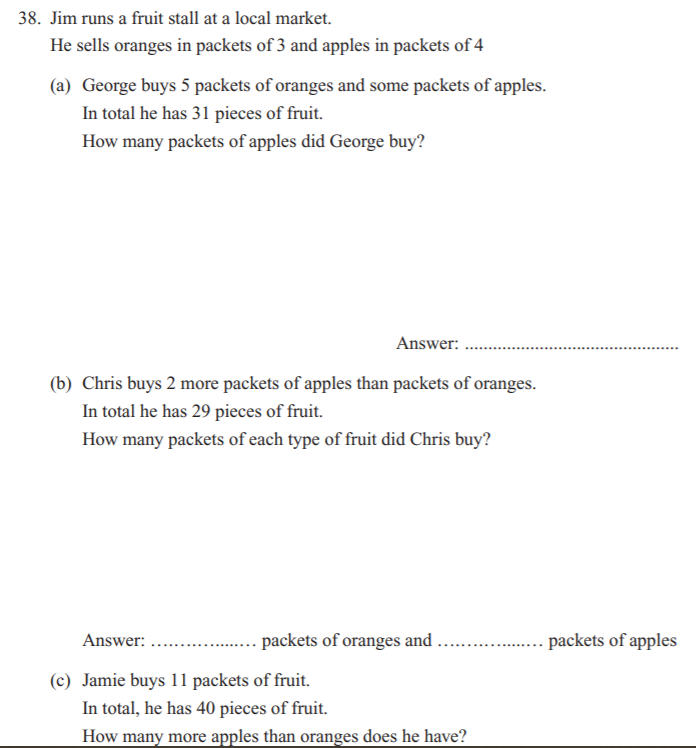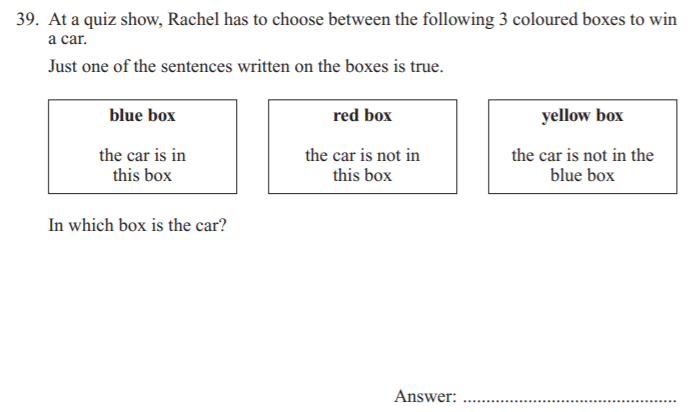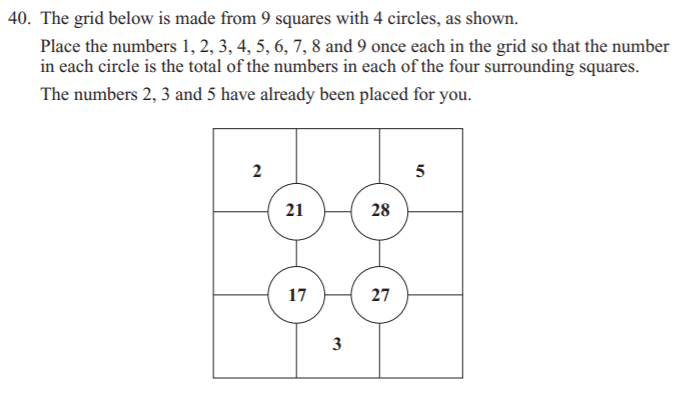12,221 Simple addition question 3,087 Simple subtraction question 4,571 Simple multiplication question 987 Simple division question 34 Do the inverse. 17 = 2 x ? a) 800 Move decimal 3 places to the right. So it becomes 800 b) 3.49 Move decimal 2 places to the left 0.5 Put them in a Column Format. So…. Add zeros where necessary to ensure all numbers have same number of digits which makes the calculation easier 61 With all sequence questions, the clue is in the change number on number. Not in the underlying number. So the change is : 45 to 53 is +8 53 to ? ? to 69 So 53 to 69 is +16. Therefore , with 2 “leaps”, 1 leap would be +8. So 61 36 Remember, “of” means multiplication in maths. So the simple way is 2/3 x 54/1. ALWAYS Cross Cancel where possible: 2/1 x 18/1 = 36 5.02, 5.2,5.202,5.22 Put the numbers in neat Column format and then go through column by column for each digit a) £2.78 £1.55 ice cream + 67p drink = £2.22 £5.00 – £2.22 b) 6 coins £2, 50p, 20p, 5p, 2p, 1p 8 & 7 Best way is to think about multiples of 56. So this might be 28 & 2, 8 & 7 etc. 8&7 is the combination that multiplies to give 56 and added gives 15 a) 11 Work out RHS first = 26. Then rearrange formula if needed. ? = 26 – 15. Therefore ? =11 b) 5 2+20 = 27 – ? BIDMAS c) 0.5 18/3 = 6. ? x 12 = 6. This would bee 0.5 a) 2 hours 19 mins 11.43 – 9.24 b) 17:10 Add 2 hours 19mins to 14:51. Step by step… 14+2 = 16. So this takes us to 16:51. Then add on the remaining 19mins. So this is 17:10 a) 14 degrees 12 – – 2 = 14 b) -7 degrees (minus 7) -2 – 5 a) 5 Years 10 months Work from May 1997 to May 2003. Which is exactly 6 years. Then reduce this by 2 months. b) 1st November 1998 Keyword being “younger”. Therefore, Sam is born after Katharine. Add 18 months to 1st May 1997 a) 56 Work backwards. 20 MINUS 6 = 14 MULTIPLY BY 4 = 56 Sense check and work through from 56. 56/4 + 6 = 20 b) 7.5 6/4 = 1.5 + 6 c) even and multiples of 4 d) 48 18 minus 6 = 12. Multiply by 4 = 48 e) 216 Work backwads twice. 9 MINUS 6 = 15 X 4 = 60. Then again. 60 minus 6 = 54 x 4 = 216 a) 70g If 18 oatcakes requires 140g, then 9 would require half of this b) 90 oatcakes Need to think of factors. This is the trick to all of these styles of questions. So 80 ml makes 18 oatcakes. Therefore, if she only has 400 ml, then its how many “lots of” 80 do you get into 400. This would be 5 lots. So 5 lots of 18 oatcakes=90 c) See below: Again, think of factors. Starting point is 18 and this question asks for 27. Therefore HCF of 18 & 27 is 9. If 18 requires X Ingredients, what does 9 require? This is your starting point. 9 requires half of what 18 requires. Therefore, 27 requires 3 times what 9 requires 2 Hours 25 mins Work out how many times 2.5 is greater than 1kg which is 2.5 times. So 2.5 x 50 = 125mins + 20 minutes at the end . So this is 145mins. Hours = 2. Mins = 25mins £12.00 1 Packet = £1.20. 2 Packets = £1.80 (given second one is half price) 12 Packets = 6 x £1.80 = £10.80 13 Packets = £10.80 + £1.20 a) and b) See below c) 7.15a.m a) 1/4 Right angle b) 50% Exactly half c) 24 If 6 chose swimming = 25%, then 100% = 6 x 4 = 24 d) 9 If swimming = 6, gymnastics = 3. Therefore, athletics = 12. 12=3 a) octagon b) obtuse (greater than 90 degrees) c) i) 3.4cm c ii) 27.2cm 34mm x 8 = 272mm a) 8cm² Count the number of full squares first = 5 Then pair up the smaller squares to whole ones. The ones on the left come to 2 squares. The ones on the right that are not complete come to 1 square. Total is 8 b) See below Note the triangle can be many different permutations. One example below a) tonnes b) litres a) B There are 8 counters and her probability of picking Green is 2/8 so 1/4. Less likely than even but not impossible! b) A There are no white counters c) D Either red or blue. 6/8 a) (1,5) b) (1,1) ; (3,1); (4,6) isosceles ===== 2 equal angles a) 12 Area of a cube is 3 x 2 x 2 = 12 (L x H x D) b) 84 6 x 4 x 4 = 96. Less what was used by Tilly = 84 850g Total Mass = 2.5kg. Try and convert to the same metric to work through the calculation. So 2,500g 2 Bags of Carrots = 250g x 2 1 Cabbage = 750g Total of Carrots + Cabbage = 1,250g . Plus 4oog for shopping bag = 1,650g in total Therefore, Potatoes = 2,500g – 1,650g = 850g a) See below b) 14 There is always one more hexagon than the pattern number c) 26 The relationship is that you multiply the pattern number by 2 and then add 6 to get the number of white hexagons. So 2pn + 6. (2*10) + 6 d) 23 Work backwards. 50 white less 6 = 44. Divide by 2 gives you 22. So this represents the number of black hexagons Given the rule in b), it has to be 23 The easiest one to start off with is ©. Given that ? x? = ♣, you have to use a square number. 4 x 4 = 16. So this fills in the answer for © and ♣ Given ∂ + © = * then given we know © = 4 and the numbers available to use, ∂ is 5. So, * = 9. Finally, ♥ = 1 Just complete one section at a time. 3/5 female. So 3/5 * 120/1 = 72 female. So this leaves 48 male If 30 males can drive , 18 cannot If 40 cannot drive, this means 22 females cannot drive as we already know 18 males cannot This leaves 50 females who can drive and a total of 80 males and females a) 10 1/6 * 60 b) £6 60 * 10p c) Profit. £1.00 10 times 50 p win = £5.00 £6.00 takings less £5.00 winnings = £1.00 profit 26cm² Area covered in paint if all 6 cubes are dipped in paint is W*L*D = (1*1*1) * 6 sides * 6 cubes = 36 However, there are 10 covered faces. (remember to count those back to back faces as 2). So in total, 10cm² a) 5 10T = 18 papers per teacher over the 3 hour timeframe. Which equals 6 papers per teacher per hour To mark 90, requires total of 15 hours. Therefore 5 teachers 10/180 * T/90 = (10*90)/180 = T. T=5 b) 5 3 x 10 = T x 5 = 30/5 c) 120 6 papers per hour * 20 Teachers = 120 papers A Molly B Polly C Lolly D Holly E Dolly More of a word problem than reading the charts. a) Number of packets of apples = 4 Oranges = x. Apples = y 5(3x) + ?(4y) = 31 15 + ?(4y) = 31 ?(4y) = 16 ?y = 16/4 Number of packets of apples = 4 b) 3 packets oranges and 5 packets of apples 3y + x = 29. = 12 + 3 = 15 pieces of fruit. He needs a further 14. Therefore, the combination would be a further 2 packets of oranges and 2 packet of apples. This equals 5 packets oranges and 3 packets apples c) 16 Given apples = y, 40 pieces 4y + 3(11-y) = 40 y+33 = 40 y = 7. Therefore, with 4 apples per pack, thats 28 apples. You therefore have 3 oranges per pack and in total 12 oranges. Therefore, apples > oranges = 16 Given that only one statement is correct: Answer to follow. To be added by David